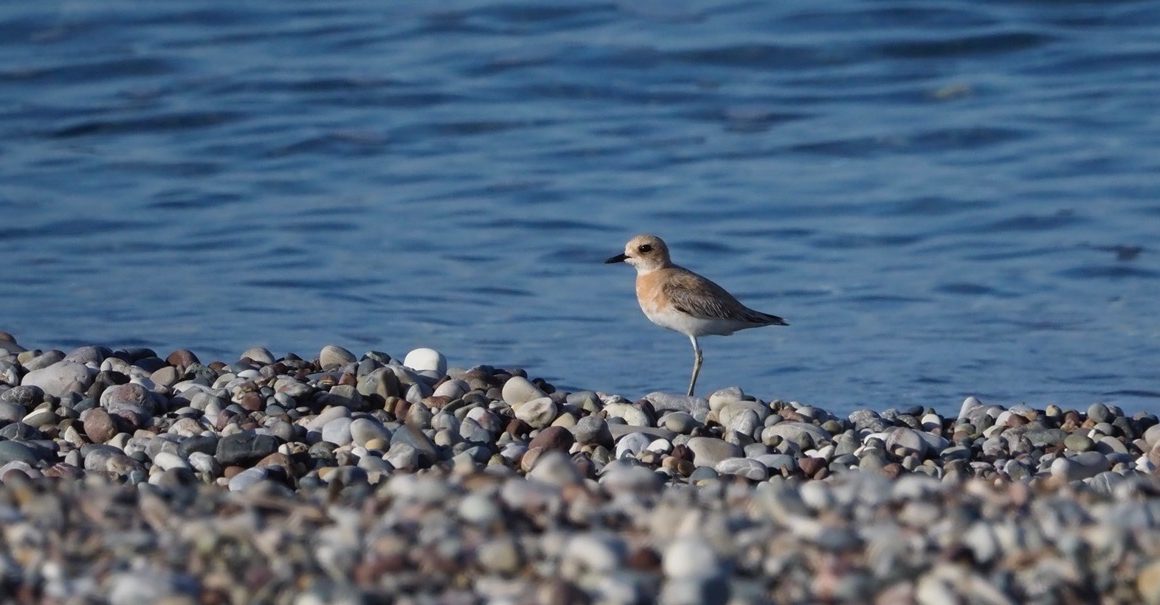
One thing that I have learned from repeated spring visits to Cyprus is that no two years are ever the same. This April conditions were excellent for migrant waders, so there were plenty to see. The island’s largest salt lake, Akrotiri, is not a great draw for waders, but the range of large, shallow saline pools on its east side, along Lady’s Mile, were in perfect condition to attract a wide variety of species. Ruffs were by far the most numerous, with as many as 500 birds in view at once. Few birds sport such magnificent breeding plumage as the male ruff, but not a single bird showed more than a hint of this plumage. I suspect that this must be because the magnificent neck feathers, or ruff, are an encumbrance to a migrant bird. These ruffs still had a 1,000 or more miles to fly to reach their northern breeding grounds. Not surprisingly, there was no courting, either: these birds were feeding continually, fuelling up for the next leg of their migration.
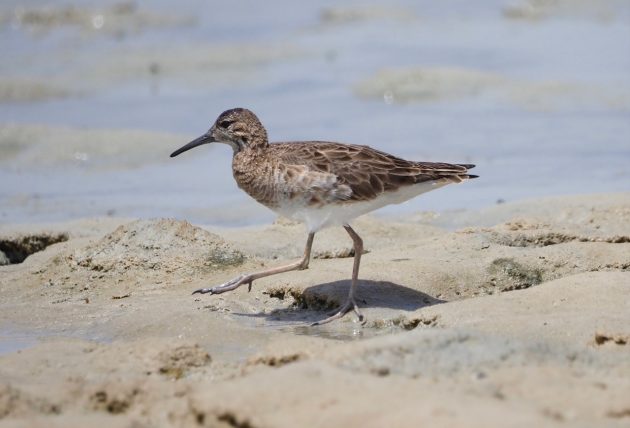
Ruffs rarely acquire their breeding finery until they reach their breeding grounds
The Ruffs were feeding out in the middle of the pools, but around the edges were scores of Little Stints, almost all now in splendid summer plumage. They were sharing the same habitat as the resident Kentish Plovers, the only wader to breed here.
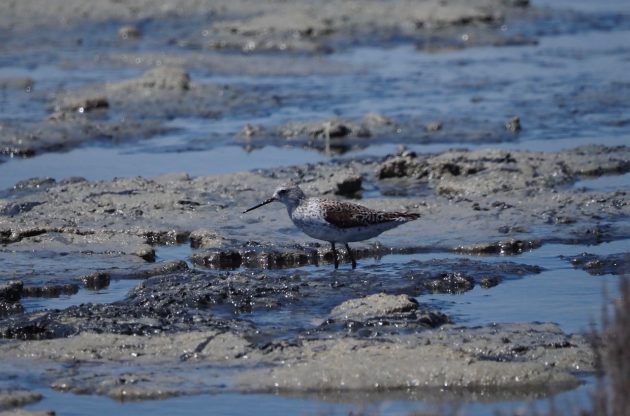
Marsh Sandpipers look a little like small Greenshanks
Some careful work with the scope produced a couple of Dunlins and half a dozen Curlew Sandpipers. The Dunlin were coming close to full summer plumage, while one of the Curlew Sandpipers was displaying its handsome, red summer plumes. So too, were a couple of Marsh Sandpipers and a Spotted Redshank. Additional species seen included a pair of Whimbrels which didn’t linger, Little Ringed Plovers and Greenshanks.
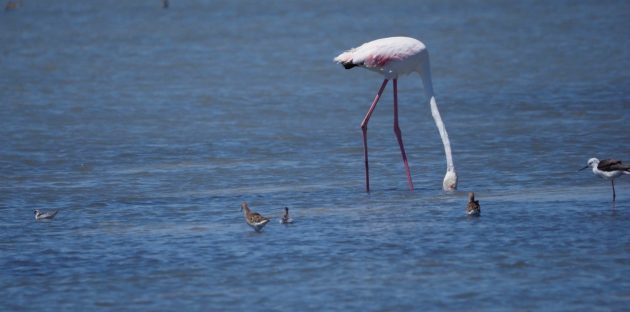
Greater Flamingoes stir the water as they feed, attracting waders. Look carefully and you might spot two Red-necked Phalaropes in this long-range photograph
A bonus was finding a trio of Red-necked Phalaropes, a regular migrant through Cyprus but not one you can always be sure of seeing. These birds, still in their grey winter plumage, liked to feed around the Greater Flamingoes. Presumably the Flamingoes stirred the mud, to the Phalaropes’ advantage, Frustratingly, though we enjoyed great views through the scope, they never came close enough to photograph satisfactorily.
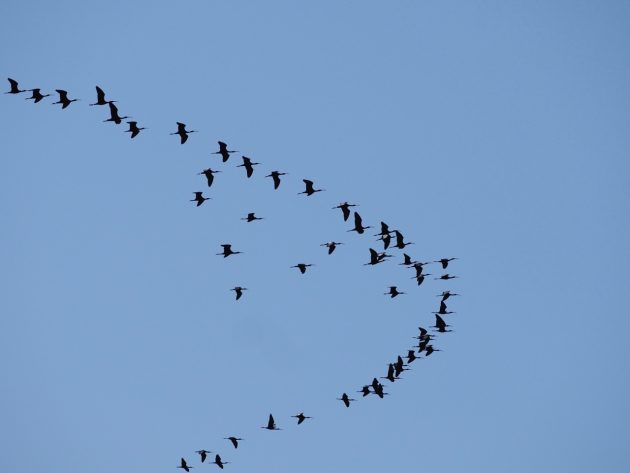
A flock of Glossy Ibises over the Phasouri Reedbeds
For freshwater waders, it’s necessary to visit Akrotiri Marsh and Phasouri Reedbeds on the other side of the salt lake. The marshes were looking as good as I have ever seen them. Until recently the cattle that grazed here were tethered, but they are now allowed to range freely, and by doing so they have opened up the marsh considerably, creating fine habitat. Here there were numerous Black-winged Stilts and Wood Sandpipers, plus a few Common Snipe, Black-tailed Godwits and both Spotted and Marsh Sandpipers (the latter birds that like both fresh and saline feeding areas).
There were other birds to be seen, too. Glossy Ibises were numerous, with the biggest flock we saw numbering at least 50 birds, while several pairs of Garganey lingered for a few days before continuing their migration north. On one occasion a flock of five Collared Pratincoles flew over: they are such elegant fliers they are always a delight to see. There were also a few herons to be seen – Purple, Squacco and Black-crowned Night Heron
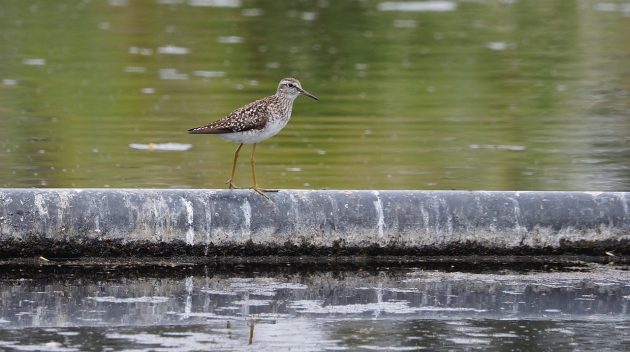
Wood Sandpiper, a freshmarsh specialist
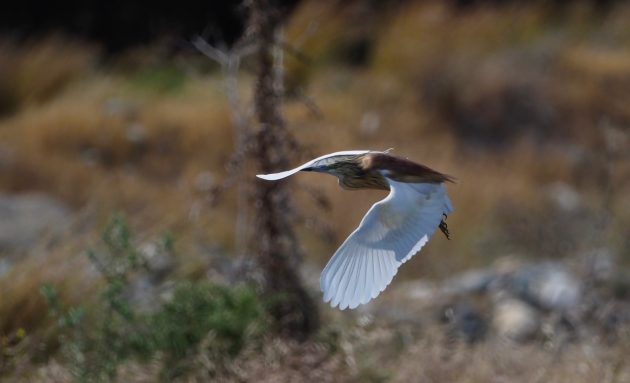
Squacco Herons are familiar spring migrants
Greater Sand Plovers are a major attraction for British birdwatchers, for Cyprus is the only site in Europe where they are seen regularly. Some over winter, but a few always pass through on spring migration. They are never easy to see, but we were lucky to encounter a passing bird on Mandria Beach. Flying in company with a Ringed Plover, it settled briefly, before continuing its migration.
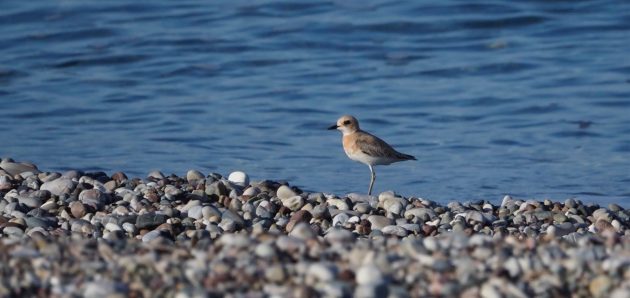
Cyprus is a reliable place to see Greater Sand Plovers (above and below), but encountering one is always a matter of luck
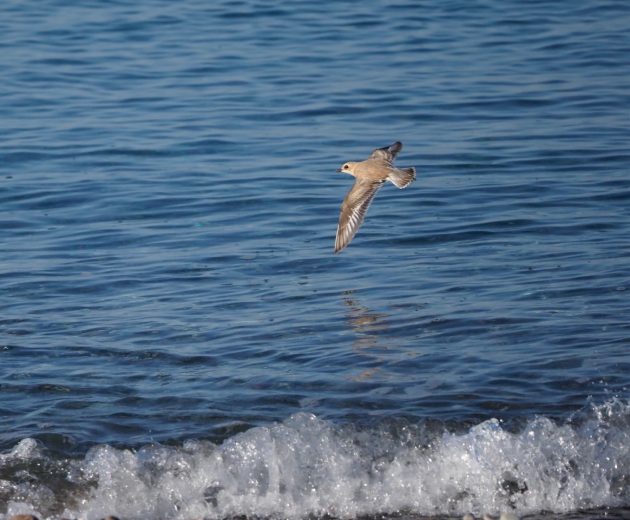
Minutes later we found a third plover species, a solitary Golden in breeding plumage, feeding behind the beach in an irrigated field, in company with scores of Red-throated Pipits and Yellow Wagtails. The commonest of the migrant wagtails is the striking black-headed feldegg, outnumbering the nominate blue-headed flava (below).
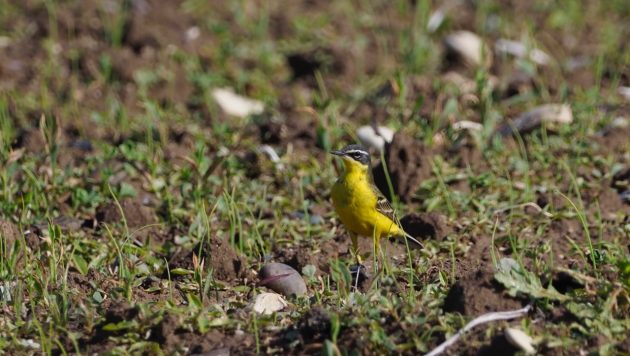
A blue-headed Yellow Wagtail of the nominate race, flava, and (below) a black-headed feldegg bird
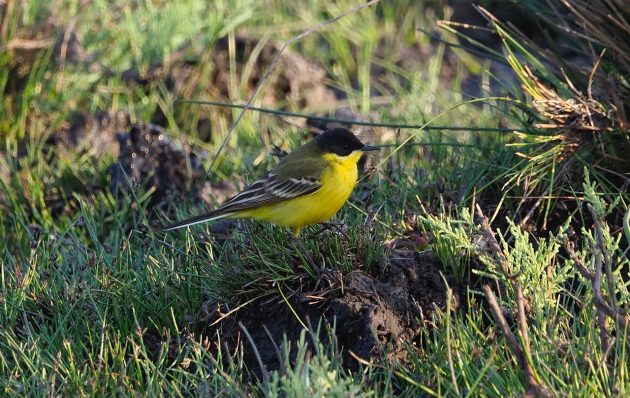
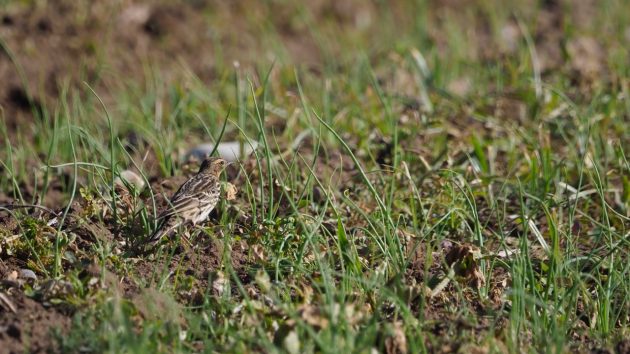
Red-throated Pipit, an easy bird to overlook
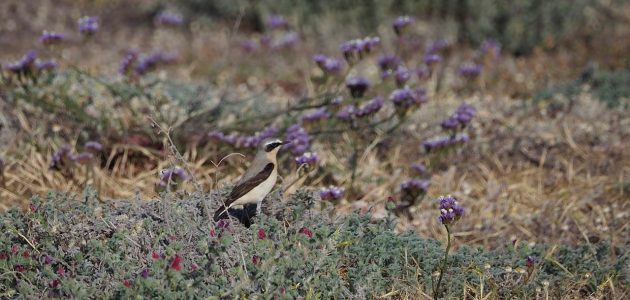
A fine cock Northern Wheatear
This year we struggled to find other passerine migrants, a reflection on the hot, settled weather we experienced during our 10 days on the island. We saw just a few Pied and Collared flycatchers, just one flock of Short-toed Larks, but none of the migrant wheatears other than Northern (Black-eared and Isabelline can both be common). Another significant miss was Wryneck, a bird that I’ve usually seen in the past. My photograph (below) was taken in 2016.
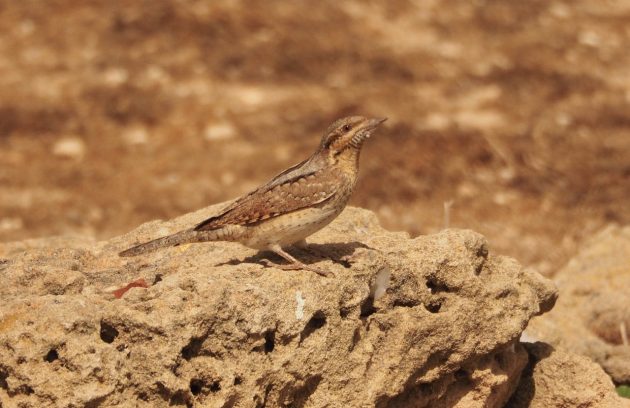
Brown bird, brown background. A Wryneck at Paphos
One significant change to the birding scene this year was being able to join the local WhatsApp birding group. I’m not sure that we saw any extra birds because of it, but it did ensure that we knew what we had missed. Several Blue-cheeked Bee-eaters were seen during our stay, but we only managed to see one that flew right over our heads. Checking the WhatsApp messages a few days after we had flown home, I saw that that a flock of six Cream-Coloured Coursers had been seen on Mandria Beach, and a similar number of Broad-billed Sandpipers had paused on Lady’s Mile. I have seen both species before on Cyprus, but I would have liked to have seen them again.
It’s easy to concentrate on the coast, but there are some fine birds to be found inland, as I will reveal next week.


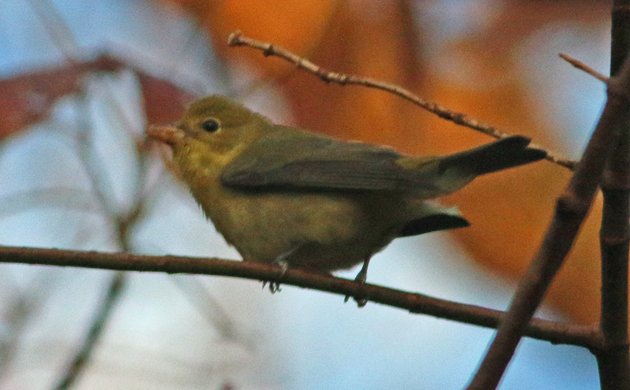
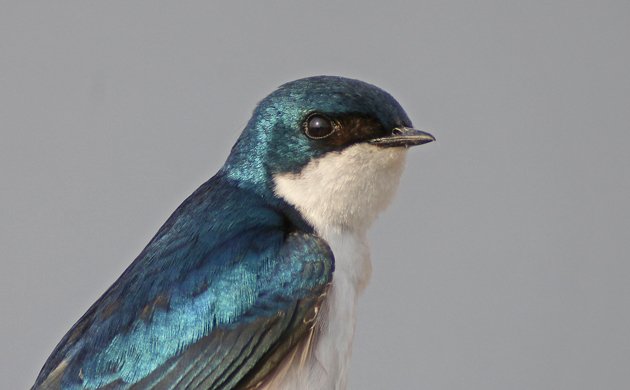

 New writers welcome – please contact us for details.
New writers welcome – please contact us for details.

















Leave a Comment